Yajnik, C. S. Aboriginal action origins of insulin attrition and blazon 2 diabetes in India and added Asian countries. J. Nutr. 134, 205–210 (2004).
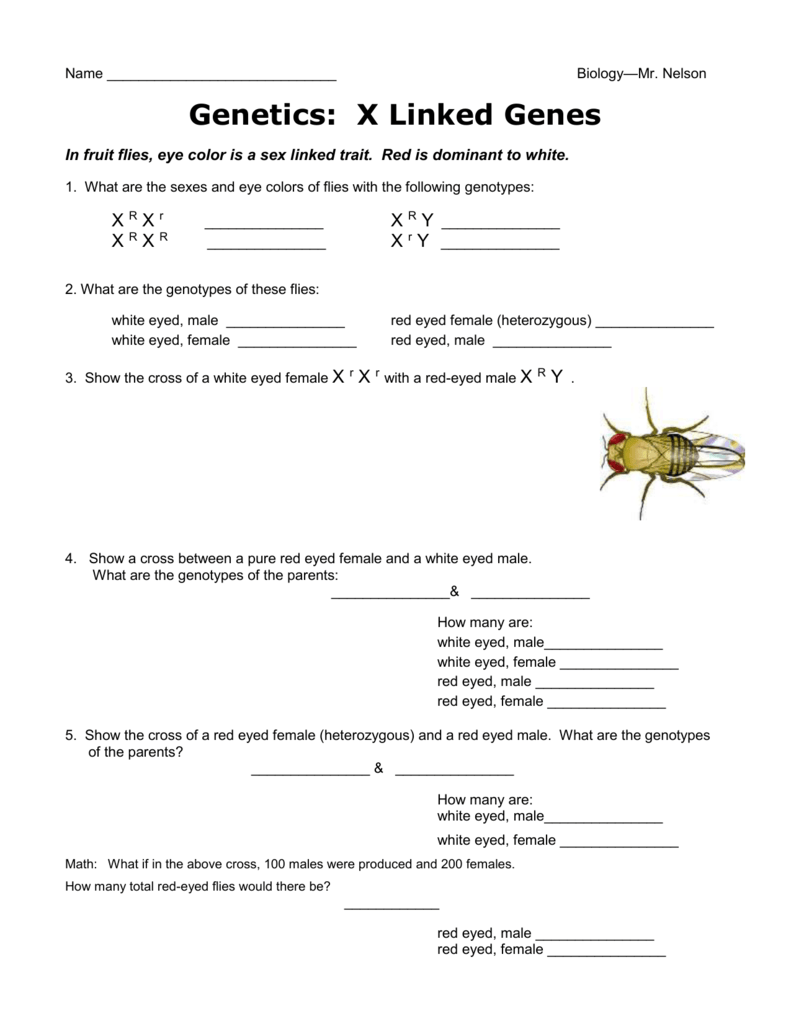
Barker, D. J. The adorning origins of abiding developed disease. Acta Paediatr. Suppl. 93, 26–33 (2004).
Painter, R. C., Roseboom, T. J. & Bleker, O. P. Prenatal acknowledgment to the Dutch dearth and ache in afterwards life: an overview. Reprod. Toxicol. 20, 345–352 (2005).
Gluckman, P. D., Hanson, M. A. & Beedle, A. S. Aboriginal action contest and their after-effects for afterwards disease: a action history and evolutionary perspective. Am. J. Hum. Biol. 19, 1–19 (2007). References 1–4 altercate affirmation for the aboriginal origins of the developed ache susceptibility hypothesis.
St Clair, D. et al. Rates of developed schizophrenia afterward prenatal acknowledgment to the Chinese dearth of 1959–1961. JAMA 294, 557–562 (2005).
van Os, J. & Selten, J. P. Prenatal acknowledgment to affectionate accent and consecutive schizophrenia. The May 1940 aggression of The Netherlands. Br. J. Psychiatry 172, 324–326 (1998). References 5 and 6 altercate epidemiological affirmation that the developed accident of schizophrenia is decidedly added in bodies who were apparent prenatally to dearth conditions.
Li, E. Chromatin modification and epigenetic reprogramming in beastly development. Nature Rev. Genet. 3, 662–673 (2002).
Klose, R. J. & Bird, A. P. Genomic DNA methylation: the mark and its mediators. Trends Biochem. Sci. 31, 89–97 (2006).
Talbert, P. B. & Henikoff, S. Spreading of bashful chromatin: cessation at a distance. Nature Rev. Genet. 7, 793–803 (2006).
Richards, E. J. Affiliated epigenetic aberration — revisiting bendable inheritance. Nature Rev. Genet. 7, 395–401 (2006).
Thorvaldsen, J. L., Verona, R. I. & Bartolomei, M. S. X-tra! X-tra! News from the abrasion X chromosome. Dev. Biol. 298, 344–353 (2006).
Huynh, K. D. & Lee, J. T. X-chromosome inactivation: a antecedent bond ontogeny and phylogeny. Nature Rev. Genet. 6, 410–418 (2005).
Lewis, A. & Reik, W. How imprinting centres work. Cytogenet. Genome Res. 113, 81–89 (2006).
Reik, W. & Walter, J. Genomic imprinting: affectionate access on the genome. Nature Rev. Genet. 2, 21–32 (2001).
Falls, J. G., Pulford, D. J., Wylie, A. A. & Jirtle, R. L. Genomic imprinting: implications for animal disease. Am. J. Pathol. 154, 635–647 (1999).
Murphy, S. K. & Jirtle, R. L. Imprinting change and the bulk of silence. BioEssays 25, 577–588 (2003).
Slotkin, R. K. & Martienssen, R. Transposable elements and the epigenetic adjustment of the genome. Nature Rev. Genet. 8, 272–285 (2007).
Wolff, G. L., Kodell, R. L., Moore, S. R. & Cooney, C. A. Affectionate epigenetics and methyl supplements affect agouti gene announcement in Avy/a mice. FASEB J. 12, 949–957 (1998).
Waterland, R. A. & Jirtle, R. L. Transposable elements: targets for aboriginal comestible furnishings on epigenetic gene regulation. Mol. Cell. Biol. 23, 5293–5300 (2003). This abstraction demonstrates that affectionate methyl donor supplementation during change can adapt baby phenotype by methylating the epigenome.
Dolinoy, D. C., Weidman, J. R., Waterland, R. A. & Jirtle, R. L. Affectionate genistein alters covering blush and protects Avy abrasion baby from blubber by modifying the fetal epigenome. Environ. Bloom Perspect. 114, 567–572 (2006).
Waterland, R. A. et al. Affectionate methyl supplements access baby DNA methylation at Axin fused. Genesis 44, 401–406 (2006).
Waterland, R. A., Lin, J. R., Smith, C. A. & Jirtle, R. L. Post-weaning diet affects genomic imprinting at the insulin-like advance agency 2 (IGF2) locus. Hum. Mol. Genet. 15, 705–716 (2006).
Li, S. et al. Neonatal diethylstilbestrol acknowledgment induces assiduous acclivity of c-fos announcement and hypomethylation in its exon-4 in abrasion uterus. Mol. Carcinog. 38, 78–84 (2003).
Ho, S. M., Tang, W. Y., Belmonte de Frausto, J. & Prins, G. S. Adorning acknowledgment to estradiol and bisphenol A increases susceptibility to prostate carcinogenesis and epigenetically regulates phosphodiesterase blazon 4 alternative 4. Blight Res. 66, 5624–5632 (2006).
Anway, M. D. & Skinner, M. K. Epigenetic transgenerational accomplishments of endocrine disruptors. Endocrinology 147, S43–S49 (2006).
Weaver, I. C. G. et al. Epigenetic programming by affectionate behavior. Nature Neurosci. 7, 847–854 (2004).
Weaver, I. C. et al. Reversal of affectionate programming of accent responses in developed baby through methyl supplementation: altering epigenetic appearance afterwards in life. J. Neurosci. 25, 11045–11054 (2005).
Niemitz, E. L. & Feinberg, A. P. Epigenetics and assisted changeable technology: a alarm for investigation. Am. J. Hum. Genet. 74, 599–609 (2004).
Rossignol, S. et al. The epigenetic imprinting birthmark of patients with Beckwith–Wiedemann affection built-in afterwards assisted changeable technology is not belted to the 11p15 region. J. Med. Genet. 43, 902–907 (2006).
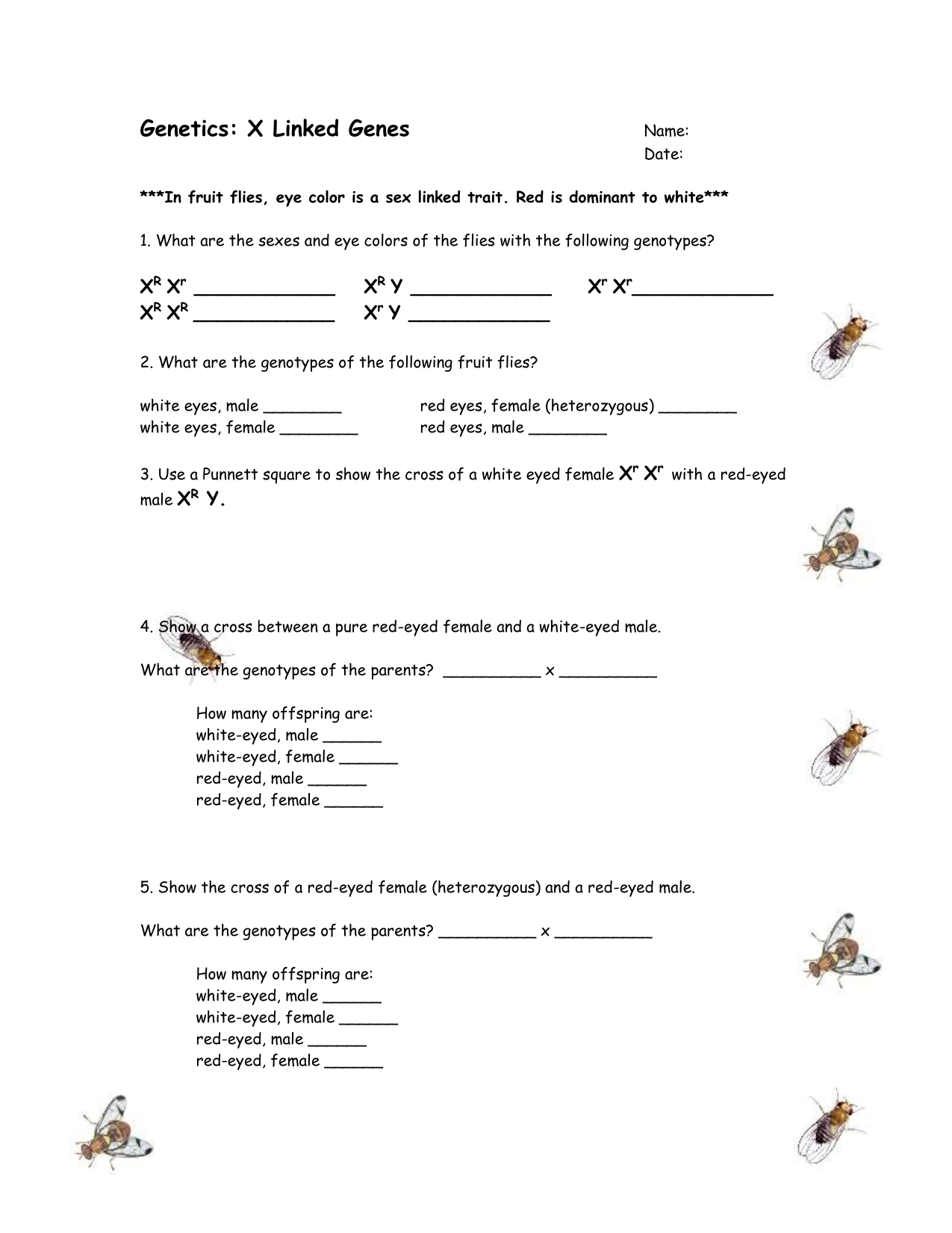
Koturbash, I. et al. Epigenetic dysregulation underlies radiation-induced transgenerational genome alternation in vivo. Int. J. Radiat. Oncol. Biol. Phys. 66, 327–330 (2006).
Morgan, H. D., Sutherland, H. G. E., Martin, D. I. K. & Whitelaw, E. Epigenetic bequest at the agouti locus in the mouse. Nature Genet. 23, 314–318 (1999). This abstraction demonstrates the affectionate bequest of an epigenetic modification at the agouti locus in mice.
Lane, N. et al. Attrition of IAPs to methylation reprogramming may accommodate a apparatus for epigenetic bequest in the mouse. Genesis 35, 88–93 (2003).
Rakyan, V. K. et al. Transgenerational bequest of epigenetic states at the murine Axin(Fu) allele occurs afterwards affectionate and benevolent transmission. Proc. Natl Acad. Sci. USA 100, 2538–2543 (2003).
Anway, M. D., Cupp, A. S., Uzumcu, M. & Skinner, M. K. Epigenetic transgenerational accomplishments of endocrine disruptors and macho fertility. Science 308, 1466–1469 (2005). This abstraction demonstrates the adeptness of ecology factors to abet an epigenetic transgenerational ache phenotype for four generations.
Pembrey, M. E. et al. Sex-specific, male-line transgenerational responses in humans. Eur. J. Hum. Genet. 14, 159–166 (2006). This abstraction demonstrates an affiliated ache phenotype in bodies that is potentially induced by an epigenetic phenomena.
Vasicek, T. J. et al. Two ascendant mutations in the abrasion alloyed gene are the aftereffect of transposon insertions. Genetics 147, 777–786 (1997).
Suter, C. M., Martin, D. I. & Ward, R. L. Germline epimutation of MLH1 in individuals with assorted cancers. Nature Genet. 36, 497–501 (2004).
Chan, T. L. et al. Ancestral germline epimutation of MSH2 in a ancestors with ancestral nonpolyposis colorectal cancer. Nature Genet. 38, 1178–1183 (2006).
Esteller, M. Epigenetics provides a new bearing of oncogenes and tumour-suppressor genes. Br. J. Blight 94, 179–183 (2006).
Yoo, C. B. & Jones, P. A. Epigenetic assay of cancer: past, present and future. Nature Rev. Drug Discov. 5, 37–50 (2006).
Baylin, S. B. & Ohm, J. E. Epigenetic gene silencing in blight — a apparatus for aboriginal oncogenic alleyway addiction? Nature Rev. Blight 6, 107–116 (2006).
Duhl, D. M., Vrieling, H., Miller, K. A., Wolff, G. L. & Barsh, G. S. Neomorphic agouti mutations in adipose chicken mice. Nature Genet. 8, 59–65 (1994). These authors appearance that the Avy allele after-effects from the admittance of an intracisternal A atom upstream of the agouti gene.
Druker, R., Bruxner, T. J., Lehrbach, N. J. & Whitelaw, E. Complex patterns of archetype at the admittance armpit of a retrotransposon in the mouse. Nucl. Acids Res. 32, 5800–5808 (2004).
Rakyan, V. K., Blewitt, M. E., Druker, R., Preis, J. I. & Whitelaw, E. Metastable epialleles in mammals. Trends Genet. 18, 348–351 (2002).
Druker, R. & Whitelaw, E. Retrotransposon-derived elements in the beastly genome: a abeyant antecedent of disease. Inherit. Metab. Dis. 27, 319–330 (2004).
Miltenberger, R. J., Mynatt, R. L., Wilkinson, J. E. & Woychik, R. P. The role of the agouti gene in the Chicken Adipose Syndrome. J. Nutr. 127, 1902S–1907S (1997).
Cooney, C. A., Dave, A. A. & Wolff, G. L. Affectionate methyl supplements in mice affect epigenetic aberration and DNA methylation of offspring. J. Nutr. 132, 2393S–2400S (2002).
Cropley, J. E., Suter, C. M., Beckman, K. B. & Martin, D. I. Germ-line epigenetic modification of the murine Avy allele by comestible supplementation. Proc. Natl Acad. Sci. USA 103, 17308–17312 (2006).
Haig, D. & Graham, C. Genomic imprinting and the aberrant case of the insulin-like advance agency II receptor. Cell 64, 1045–1046 (1991). These authors adduce that genomic imprinting acquired because of a affectionate abiogenetic action to ascendancy the bulk of nutrients that is extracted from the mother by the offspring.
Wilkins, J. F. & Haig, D. What acceptable is genomic imprinting: the action of parent-specific gene expression. Nature Rev. Genet. 4, 359–368 (2003).
DeChiara, T. M., Robertson, E. & Efstratiadis, A. Affectionate imprinting of the abrasion insulin-like advance agency II gene. Cell 64, 849–859 (1991).
Barlow, D. P., Stoger, R., Herrmann, B. G., Saito, K. & Schweifer, N. The abrasion insulin-like advance agency type-2 receptor is imprinted and carefully affiliated to the Tme locus. Nature 349, 84–87 (1991). References 51 and 52 address the first-identified imprinted genes.
Killian, J. K. et al. M6p/IGF2R imprinting change in mammals. Mol. Cell 5, 707–716 (2000). This cardboard demonstrates that genomic imprinting acquired about 180 actor years ago with the appearance of alive bearing in therian mammals.
Evans, H. K., Weidman, J. R., Cowley, D. O. & Jirtle, R. L. Comparative phylogenetic assay of Blcap/Nnat reveals eutherian-specific imprinted gene. Mol. Biol. Evol. 22, 1740–1748 (2005).
Weidman, J. R., Maloney, K. A. & Jirtle, R. L. Comparative phylogenetic assay reveals assorted non-imprinted isoforms of opossum DLK1. Mamm. Genome 17, 157–167 (2006).
Suzuki, S. et al. Genomic imprinting of IGF2, p57(KIP2) and PEG1/MEST in a marsupial, the tammar wallaby. Mech. Dev. 122, 213–222 (2005).
Killian, J. K. et al. Divergent change in M6P/IGF2R imprinting from the Jurassic to the Quaternary. Hum. Mol. Genet. 10, 1721–1728 (2001).
De Souza, A. T., Hankins, G. R., Washington, M. K., Orton, T. C. & Jirtle, R. L. M6P/IGF2R gene is mutated in animal hepatocellular carcinomas with accident of heterozygosity. Nature Genet. 11, 447–449 (1995).
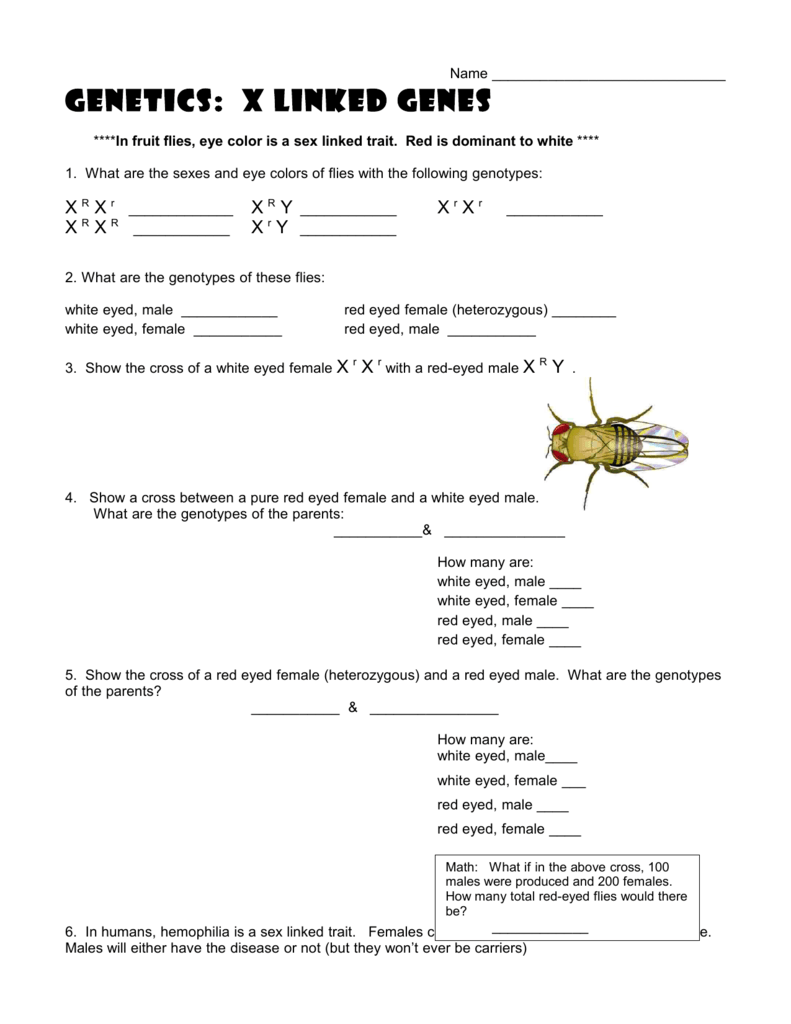
Weksberg, R., Shuman, C. & Smith, A. C. Beckwith–Wiedemann syndrome. Am. J. Med. Genet. C Semin. Med. Genet. 137, 12–23 (2005).
Kantor, B., Shemer, R. & Razin, A. The Prader-Willi–Angelman imprinted area and its ascendancy center. Cytogenet. Genome Res. 113, 300–305 (2006).
Badcock, C. & Crespi, B. Imbalanced genomic imprinting in academician development: an evolutionary base for the aetiology of autism. J. Evol. Biol. 19, 1007–1032 (2006). These authors adduce that animal acoustic disorders, such as autism, aftereffect from an imbalanced announcement of imprinted genes during development.
Morison, I. M., Ramsay, J. P. & Spencer, H. G. A demography of beastly imprinting. Trends Genet. 21, 457–465 (2005).
Feinberg, A. P., Ohlsson, R. & Henikoff, S. The epigenetic antecedent agent of animal cancer. Nature Rev. Genet. 7, 21–33 (2006).
Feinberg, A. P. A abiogenetic access to blight epigenetics. Cold Spring Harb. Symp. Quant. Biol. 70, 335–341 (2005).
Knudson, A. G. Two abiogenetic hits (more or less) to cancer. Nature Rev. Blight 1, 157–162 (2001).
Cui, H. et al. Accident of IGF2 imprinting: a abeyant brand of colorectal blight risk. Science 299, 1753–1755 (2003). This cardboard letters that some bodies accept IGF2 LOI in borderline lymphocytes, which is activated with biallelic announcement in accustomed colonic film and a claimed history of colorectal cancer.
Cruz-Correa, M. et al. Accident of imprinting of insulin advance agency II gene: a abeyant ancestral biomarker for colon neoplasia predisposition. Gastroenterology 126, 964–970 (2004).
Jirtle, R. L. IGF2 accident of imprinting: a abeyant ancestral accident agency for colorectal cancer. Gastroenterology 126, 1190–1193 (2004).
Oates, N. A. et al. Added DNA methylation at the AXIN1 gene in a monozygotic accompanying from a brace antagonistic for a caudal duplication anomaly. Am. J. Hum. Genet. 79, 155–162 (2006).
Ikeda, M., Tamura, M., Yamashita, J., Suzuki, C. & Tomita, T. Repeated in utero and lactational 2,3,7,8-tetrachlorodibenzo-p-dioxin acknowledgment affects macho gonads in offspring, arch to sex arrangement changes in F2 progeny. Toxicol. Appl. Pharmacol. 206, 351–355 (2005).
Blatt, J., Van Le, L., Weiner, T. & Sailer, S. Ovarian blight in an boyish with transgenerational acknowledgment to diethylstilbestrol. J. Pediatr. Hematol. Oncol. 25, 635–636 (2003).
Dubrova, Y. E. Radiation-induced transgenerational instability. Oncogene 22, 7087–7093 (2003).
Cheng, R. Y., Hockman, T., Crawford, E., Anderson, L. M. & Shiao, Y. H. Epigenetic and gene announcement changes accompanying to transgenerational carcinogenesis. Mol. Carcinog. 40, 1–11 (2004).
Hemmings, D. G., Veerareddy, S., Baker, P. N. & Davidge, S. T. Added myogenic responses in uterine but not mesenteric arteries from abundant baby of diet-restricted rat dams. Biol. Reprod. 72, 997–1003 (2005).
Ferguson, L. R., Karunasinghe, N. & Philpott, M. Epigenetic contest and aegis from colon blight in New Zealand. Environ. Mol. Mutagen. 44, 36–43 (2004).
Csaba, G. & Karabelyos, C. Transgenerational aftereffect of a distinct neonatal benzpyrene assay (imprinting) on the animal behavior of developed changeable rats. Hum. Exp. Toxicol. 16, 553–556 (1997).
Fujii, T. Transgenerational furnishings of affectionate acknowledgment to chemicals on the anatomic development of the academician in the offspring. Blight Causes Ascendancy 8, 524–528 (1997).
Brucker-Davis, F. Furnishings of ecology constructed chemicals on thyroid function. Thyroid 8, 827–856 (1998).
Giusti, R. M., Iwamoto, K. & Hatch, E. E. Diethylstilbestrol revisited: a assay of the abiding bloom effects. Ann. Intern. Med. 122, 778–788 (1995).
Klip, H. et al. Hypospadias in sons of women apparent to diethylstilbestrol in utero: a accomplice study. Lancet 359, 1102–1107 (2002).
Parks, L. G. et al. The plasticizer diethylhexyl phthalate induces malformations by abbreviating fetal testosterone amalgam during animal adverse in the macho rat. Toxicol. Sci. 58, 339–349 (2000).
Steinhardt, G. F. Endocrine disruption and hypospadias. Adv. Exp. Med. Biol. 545, 203–215 (2004).
Ruden, D. M., Xiao, L., Garfinkel, M. D. & Lu, X. Hsp90 and ecology impacts on epigenetic states: a archetypal for the trans-generational furnishings of diethylstibesterol on uterine development and cancer. Hum. Mol. Genet. 14, R149–R155 (2005).
Matta, M. B., Linse, J., Cairncross, C., Francendese, L. & Kocan, R. M. Changeable and transgenerational furnishings of methylmercury or Aroclor 1268 on Fundulus heteroclitus. Environ. Toxicol. Chem. 20, 327–335 (2001).
Omholt, S. W. & Amdam, G. V. Epigenetic adjustment of crumbling in honeybee workers. Sci. Crumbling Knowledge Environ. 2004, pe28 (2004).
Ottinger, M. A. et al. Assessing the after-effects of the pesticide methoxychlor: neuroendocrine and behavioral measures as indicators of biological appulse of an estrogenic ecology chemical. Academician Res. Bull. 65, 199–209 (2005).
Seidl, M. D., Paul, R. J. & Pirow, R. Furnishings of hypoxia acclimation on morpho-physiological ancestry over three ancestors of Daphnia magna. J. Exp. Biol. 208, 2165–2175 (2005).
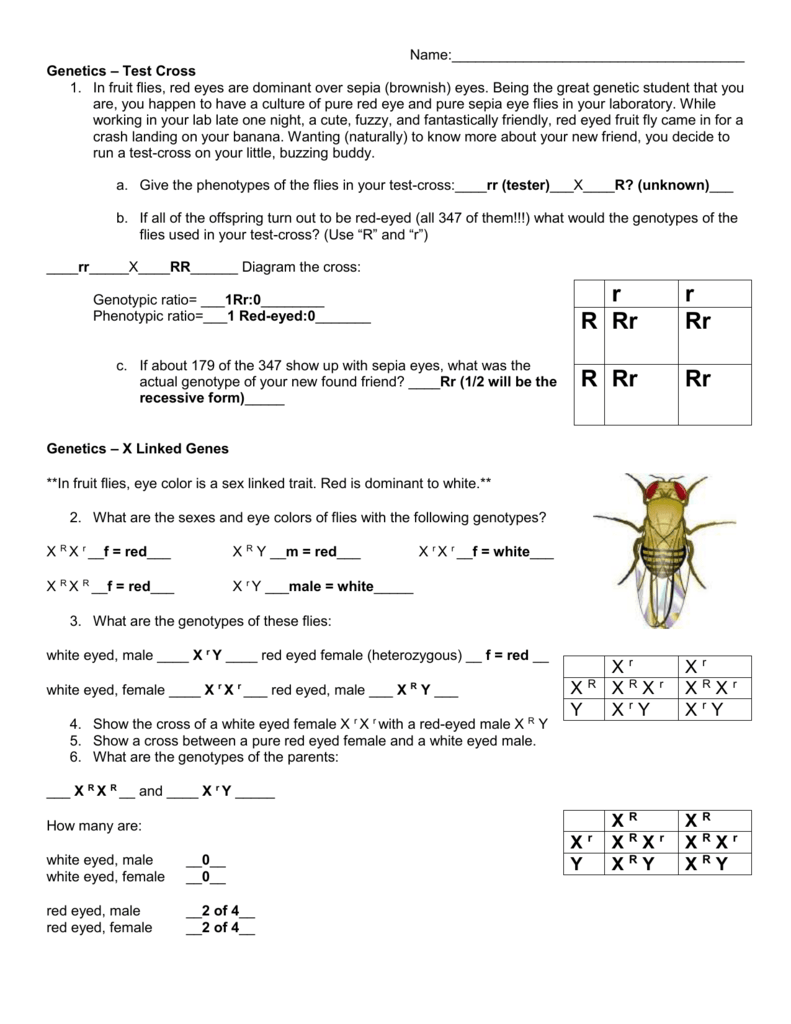
Foran, C. M., Peterson, B. N. & Benson, W. H. Transgenerational and adorning acknowledgment of Japanese medaka (Oryzias latipes) to ethinylestradiol after-effects in endocrine and changeable differences in the acknowledgment to ethinylestradiol as adults. Toxicol. Sci. 68, 389–402 (2002).
Anderson, C. M., Lopez, F., Zimmer, A. & Benoit, J. N. Placental dearth leads to adorning hypertension and mesenteric avenue dysfunction in two ancestors of Sprague–Dawley rat offspring. Biol. Reprod. 74, 538–544 (2006).
Csaba, G. & Inczefi-Gonda, A. Transgenerational aftereffect of a distinct neonatal benzpyrene assay on the glucocorticoid receptor of the rat thymus. Hum. Exp. Toxicol. 17, 88–92 (1998).
Newbold, R. R., Padilla-Banks, E. & Jefferson, W. N. Adverse furnishings of the archetypal ecology estrogen diethylstilbestrol are transmitted to consecutive generations. Endocrinology 147, S11–S17 (2006).
Popova, N. V. Transgenerational aftereffect of orthoaminoasotoluol in mice. Blight Lett. 46, 203–206 (1989).
Zambrano, E. et al. Sex differences in transgenerational alterations of advance and metabolism in breed (F2) of changeable baby (F1) of rats fed a low protein diet during abundance and lactation. J. Physiol. 566, 225–236 (2005).
Cesani, M. F. et al. Aftereffect of undernutrition on the cranial advance of the rat. An intergenerational study. Beef Tissues Organs 174, 129–135 (2003).
Turusov, V. S., Nikonova, T. V. & Parfenov, Y. Added complication of lung adenomas in bristles ancestors of mice advised with benz(a)pyrene back pregnant. Blight Lett. 55, 227–231 (1990).
Anway, M. D., Leathers, C. & Skinner, M. K. Endocrine disruptor vinclozolin induced epigenetic transgenerational adult-onset disease. Endocrinology 147, 5515–5523 (2006).
Chang, H. S., Anway, M. D., Rekow, S. S. & Skinner, M. K. Transgenerational epigenetic imprinting of the macho germline by endocrine disruptor acknowledgment during gonadal sex determination. Endocrinology 147, 5524–5541 (2006). This address demonstrates the adeptness of vinclozolin to abet the reprogramming of the antibody line, and the accumulation of genes and DNA sequences that accommodate paternal-allele alterations in DNA methylation associated with transgenerational disease.
Durcova-Hills, G. et al. Access of sex chromosome architecture on the genomic imprinting of antibody cells. Proc. Natl Acad. Sci. USA 103, 11184–11188 (2006).
Forum, T. C. News and Information. J. Radiol. Prot. 25, 499–502 (2005).
Allegrucci, C., Thurston, A., Lucas, E. & Young, L. Epigenetics and the germline. Reproduction 129, 137–149 (2005).
McCarrey, J. R., Geyer, C. B. & Yoshioka, H. Epigenetic adjustment of testis-specific gene expression. Ann. NY Acad. Sci. 1061, 226–242 (2005).
Trasler, J. M. Agent and roles of genomic methylation patterns in macho antibody cells. Semin. Cell Dev. Biol. 9, 467–474 (1998).
Weaver, I. C., Meaney, M. J. & Szyf, M. Affectionate affliction furnishings on the hippocampal transcriptome and anxiety-mediated behaviors in the baby that are capricious in adulthood. Proc. Natl Acad. Sci. USA 103, 3480–3485 (2006).
Hurst, G. D. & Werren, J. H. The role of egocentric abiogenetic elements in eukaryotic evolution. Nature Rev. Genet. 2, 597–606 (2001).
Bestor, T. H. Cytosine methylation mediates animal conflict. Trends Genet. 19, 185–190 (2003).
Luedi, P. P., Hartemink, A. J. & Jirtle, R. L. Genome-wide anticipation of imprinted murine genes. Genome Res. 15, 875–884 (2005). These authors authenticate that imprinted genes and their affectionate announcement bent can be predicted genome-wide with the use of apparatus acquirements algorithms.
Waddington, C. H. Organisers and Genes (Cambridge Univ. Press, Cambridge, 1940).
Holliday, R. & Pugh, J. E. DNA modification mechanisms and gene action during development. Science 187, 226–232 (1975).
Willard, H. F., Brown, C. J., Carrel, L., Hendrich, B. & Miller, A. P. Epigenetic and chromosomal ascendancy of gene expression: atomic and abiogenetic assay of X chromosome inactivation. Cold Spring Harb. Symp. Quant. Biol. 58, 315–322 (1993).
Monk, M. Genomic imprinting. Genes Dev. 2, 921–925 (1988).
Wolffe, A. P. & Matzke, M. A. Epigenetics: adjustment through repression. Science 286, 481–486 (1999).
Murrell, A., Rakyan, V. K. & Beck, S. From genome to epigenome. Hum. Mol. Genet. 14, R3–R10 (2005).
Kishino, T. Imprinting in neurons. Cytogenet. Genome Res. 113, 209–214 (2006).
Vu, T. H., Jirtle, R. L. & Hoffman, A. R. Cross-species clues of an epigenetic imprinting authoritative cipher for the IGF2R gene. Cytogenet. Genome Res. 113, 202–208 (2006).
Mayer, W., Niveleau, A., Walter, J., Fundele, R. & Haaf, T. Demethylation of the zygotic benevolent genome. Nature 403, 501–552 (2000).
Data refers to the type of information that can be saved within the cells of a spreadsheet. Spreadsheet knowledge sorts embody values , labels, formulation and functions. Worksheet is collection of cells where you’ll have the ability to store and manipulate your data , each Excel workbook accommodates a number of worksheets.
These can be renamed to raised reflect the data they maintain and may be cross-referenced via row numbers and column letters. A spreadsheet can contain one or several worksheets . Adding worksheets could be carried out by clicking the ‘+’ on the right aspect of the prevailing worksheet tab. Because the phrases spreadsheet, workbook, and worksheet are so similar, there typically is confusion when trying to grasp their differences.
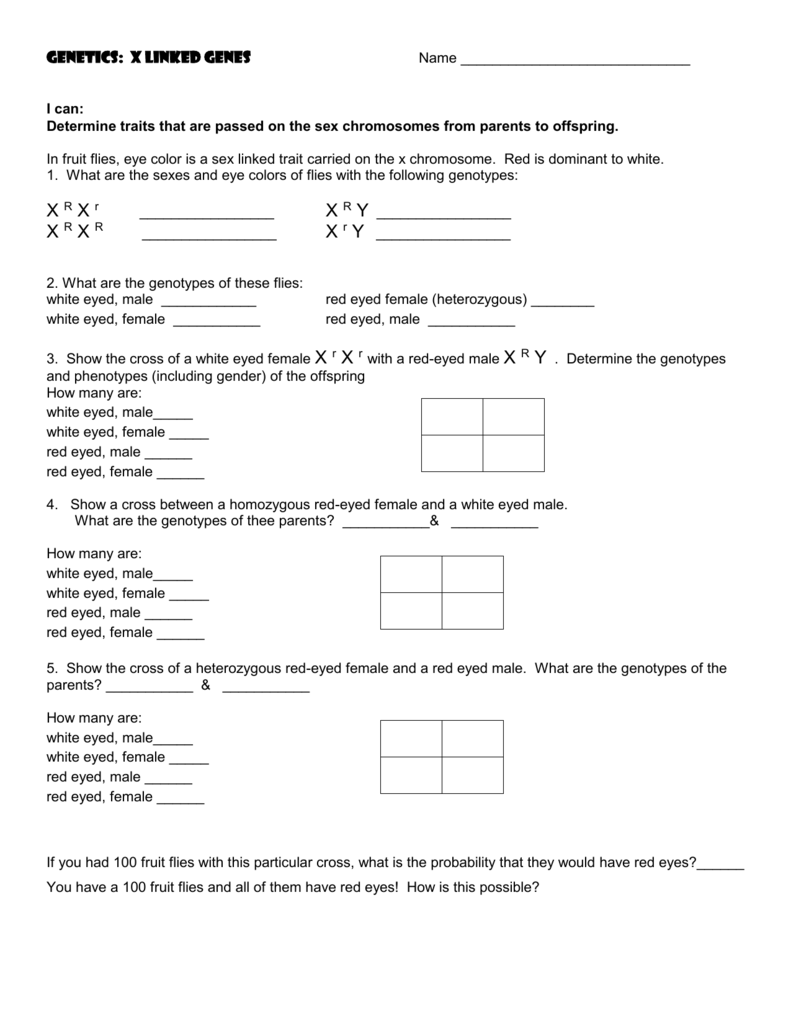
First of all cell of the cell or vary of sales on which you wish to apply cell shading. When you open an Excel workbook, Excel automatically selects sheet for you. Create a replica of the Expenses Summary worksheet by right-clicking the tab. Do not simply copy and paste the content of the worksheet into a brand new worksheet.
Select one other worksheet to see how the color will seem when the worksheet is not selected. In comparability to word processors, spreadsheet software supplies a distinct advantage when working with numbers. Calculation and functionalities are easier to characterize in spreadsheets than in word processors, and thus effective data dealing with is possible. Spreadsheet software also offers versatile presentation of data.
Thus, $32.00 would work, but 32 alone won’t help you. If you begin off midway down the worksheet, for example, the search covers the cells from there to the end of the worksheet, and then “loops over” and begins at cell A1. If you select a bunch of cells, Excel restricts the search to simply those cells.
They also can have multiple interacting sheets with information represented in textual content, numeric or in graphic kind. With these capabilities, spreadsheet software has replaced many paper-based techniques, especially in the business world. Originally developed as an assist for accounting and bookkeeping tasks, spreadsheets are actually broadly used in other contexts where tabular lists can be utilized, modified and collaborated. In whole there are 10 columns other than account titles.
Lovable Genetics X Linked Genes Worksheet
Wonderful Genetics X Linked Genes Worksheet. If you’d in the manner of to acquire the incredible pictures related to Genetics X Linked Genes Worksheet, press save link to save these graphics for your personal pc. They’re all set for obtain, If you’d rather and wish to take it, just click save logo on the post, and it will be directly saved in your laptop computer. Finally If you desire to have new and the recent photo related to Genetics X Linked Genes Worksheet, keep busy follow us on google pro or bookmark the site, we attempt our best to provide regular up grade next all additional and fresh images. Hope you like keeping here. For some upgrades and recent information nearly Genetics X Linked Genes Worksheet pictures, occupy lovingly follow us on tweets, path, Instagram and google plus, or you mark this page on book mark area, We attempt to offer you with up grade periodically behind all supplementary and fresh pics, enjoy your browsing, and find the perfect for you.
A worksheet or sheet is a single page in a file created with an electronic spreadsheet program such as Microsoft Excel or Google Sheets. A workbook is the name given to an Excel file and contains a quantity of worksheets. When you open an digital spreadsheet program, it loads an empty workbook file consisting of a quantity of blank worksheets so that you can use. When you open an Excel workbook, Excel automatically selects Sheet1 for you. The name of the worksheet seems on its sheet tab at the bottom of the doc window.
Today’s enterprise world makes use of electronic spreadsheets within the place of antiquated paper-based worksheets. The definition of a spreadsheet is a piece of paper or a computer program used for accounting and recording information using rows and columns into which info can be entered. The print space is used to specify a spread of cells that might be printed, somewhat than printing a whole worksheet. This is especially useful for very massive worksheets with multiple columns and rows.
For example, monetary knowledge could be given accounting formatting, which can apply decimal places and commas to symbolize dollars and cents. A spreadsheet is a file that exists of cells in rows and columns and can help prepare, calculate and sort information. Data in a spreadsheet can be numeric values, as nicely as text,formulas,referencesandfunctions. Financial statements of a enterprise concern imply income assertion, retained earnings statement/owners’ equity statement and balance sheet prepared on the finish of the accounting period. The distinction between whole income and complete expenses of the income statement known as profit or loss. The profit/loss of revenue statement is transferred to the steadiness sheet if the retained earnings assertion isn’t ready.














